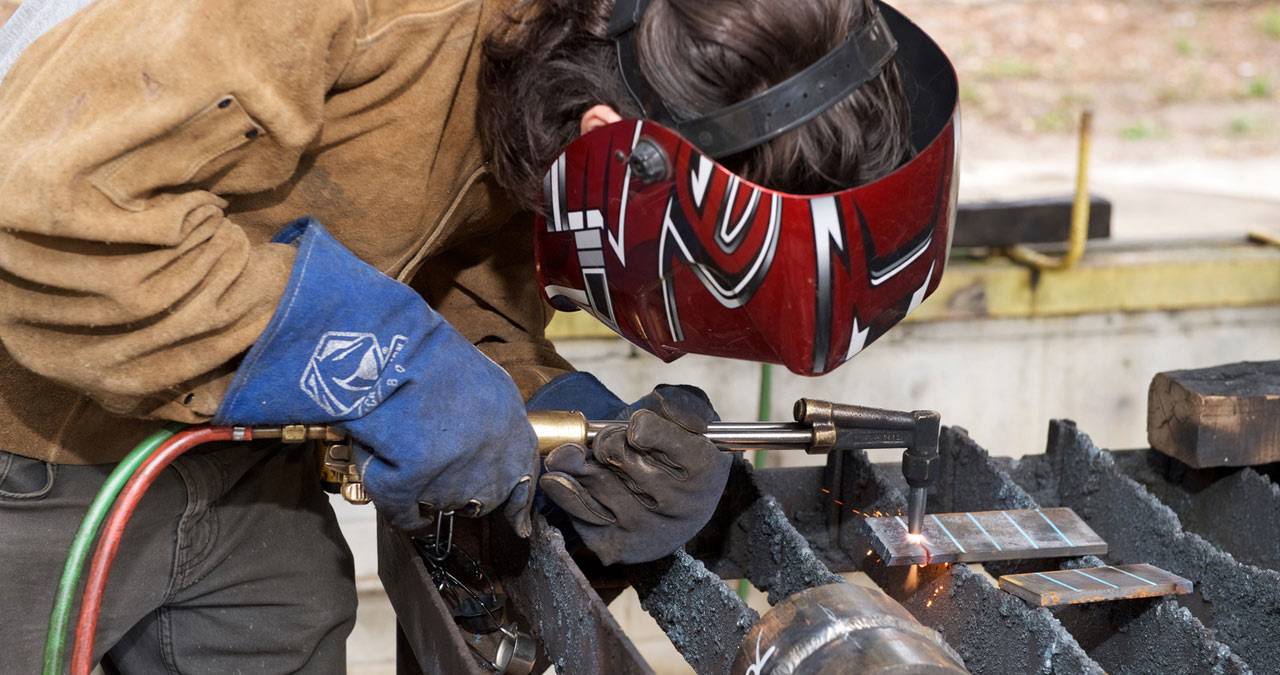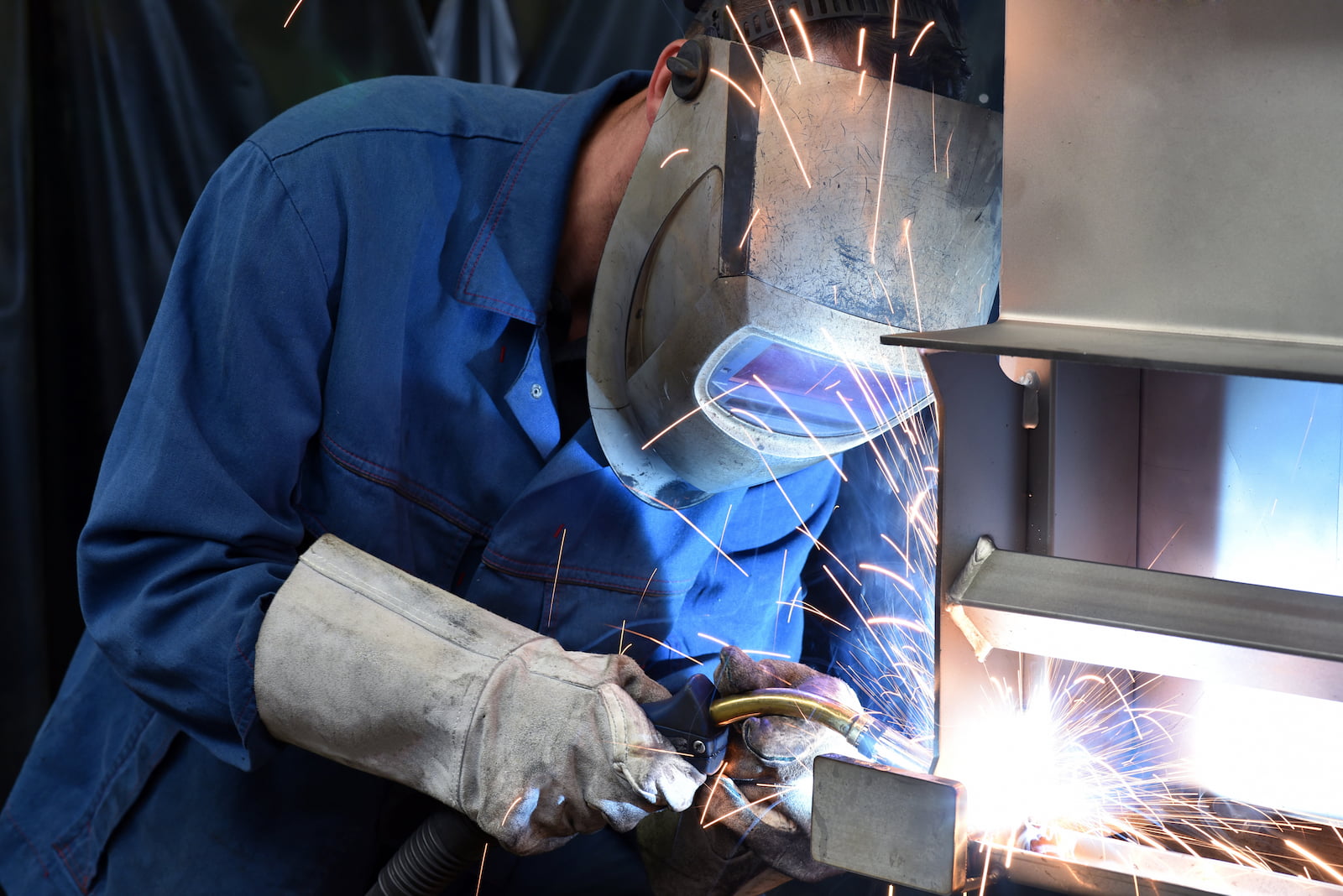Usual Welding Fixing Issues and How to Address Them Successfully
Welding repair services frequently run into a variety of problems that can threaten the honesty of the end product. Usual problems include poor penetration, porosity, and imbalance, to name a few. Each defect presents special challenges that require details approaches for resolution. Understanding these problems is crucial for welders aiming to improve their abilities and results. This discussion will explore these usual welding repair work concerns and efficient techniques to address them.
Poor Penetration
Inadequate penetration occurs when the weld steel stops working to totally fuse with the base product, resulting in weak joints and potential structural failures. This issue typically comes from inadequate warm input, inaccurate electrode angle, or incorrect welding speed. Welders might run into poor penetration due to a mistake of the necessary specifications for a specific material thickness or type. In addition, contamination on the base product's surface can hinder efficient bonding, worsening the problem. To attend to inadequate penetration, welders should ensure appropriate settings on their equipment and preserve a clean work surface area. Regular evaluation of welds is advised to recognize any kind of shortages early, permitting prompt corrections and the prevention of endangered architectural stability in welded settings up.
Porosity
Porosity is a common problem in welded joints that manifests as small gas bubbles entraped within the weld steel. This issue can endanger the honesty of the weld, leading to decreased toughness and potential failing under stress and anxiety. Belgrade Fabrication. Porosity normally arises from contamination, wetness, or incorrect welding strategies, which permit gases to get away into the liquified weld swimming pool. To resolve porosity, welders must assure appropriate surface area preparation, keep a tidy workplace, and make use of ideal welding specifications. In addition, selecting the best filler material and protecting gas can minimize gas entrapment. Routine evaluation and screening of welds can aid identify porosity early, ensuring prompt rehabilitative actions are taken, thereby maintaining the quality and reliability of the welded framework
Imbalance
Misalignment in welding can develop from different aspects, consisting of improper setup and thermal growth. Recognizing the root creates is necessary for efficient resolution. A number of correction methods are offered to realign components and ensure structural stability.
Root causes of Imbalance
Welding misalignment typically stems from a range of underlying issues that can endanger structural stability. One primary cause is inappropriate fit-up of elements before welding, which can result in gaps and irregular surfaces. Variations in thermal development during the welding procedure can additionally cause distortion, specifically if the materials being signed up with have different coefficients of development. Additionally, inadequate fixturing and securing might stop working to hold parts safely in position, bring about activity during welding. Inadequately maintained tools, consisting of welding machines and tools, might present disparities in the weld bead, additional adding to imbalance. Finally, driver error, stemming from insufficient training or experience, can additionally play a considerable role in creating misaligned welds.
Correction Techniques Offered
Resolving misalignment successfully calls for a combination of corrective methods customized to the specific problems available. One usual technique is the usage of components or jigs to hold parts in the proper placement during welding, making certain constant alignment. In addition, pre-heating the materials can help in reducing distortion and boost fit-up. For substantial misalignment, mechanical adjustment techniques, such as utilizing hydraulic jacks or clamps, can be used to fix the position prior to welding. Post-weld warmth therapy may additionally be necessary to soothe tensions triggered by imbalance. Lastly, careful examination and adjustment during the arrangement phase can stop imbalance concerns from coming to be considerable troubles, promoting a smoother welding process and enhancing overall architectural integrity.
Distortion
Distortion is an usual obstacle in welding that can arise from different factors, including irregular heating & cooling. Understanding the causes of distortion is important for implementing efficient prevention methods. Addressing this problem not just improves architectural stability but also improves the overall high quality of the weld.
Sources of Distortion
When based on the intense warmth of welding, materials commonly undergo adjustments that can lead to distortion. This phenomenon primarily welding cast aluminum occurs from thermal development and contraction throughout the welding process. As the weld location warms up, the product broadens; upon cooling, it gets, which can create inner tensions. On top of that, irregular heating throughout a workpiece can intensify these anxieties, resulting in bending or flexing. The sort of product also plays a substantial duty; steels with differing thermal conductivity and coefficients of expansion may react in a different way, resulting in uncertain distortions. Additionally, inadequate joint design and poor fixturing can contribute to misalignment throughout welding, increasing the possibility of distortion. Understanding these causes is important for efficient welding fixing and prevention methods.
Prevention Techniques
Effective avoidance strategies for distortion during welding concentrate on managing warm input and ensuring proper joint style. Maintaining a consistent warm input helps to lessen thermal growth and contraction, which can bring about distortion. Using strategies such as preheating the work surface can also minimize the temperature gradient, promoting uniform home heating. In addition, picking appropriate joint layouts, such as T-joints or lap joints, can boost security and decrease tension focus. Executing proper fixturing to safeguard er70s the workpieces in position even more aids in preserving alignment during the welding process. Lastly, staggered welding series can disperse warm a lot more equally, stopping local distortion. By applying these methods, welders can substantially reduce the possibility of distortion and enhance the overall top quality of their welds.
Cracking
Splitting is a common problem experienced in welding fixings, frequently resulting from numerous variables such as inappropriate air conditioning prices, material selection, or insufficient joint preparation. The event of splits can considerably jeopardize the honesty of the weld, bring about possible failures throughout procedure. To resolve this problem, welders have to first assess the root causes, making sure that products work and suitably chosen for the certain application. Additionally, regulating the air conditioning price during the welding process is necessary; fast air conditioning can induce stress and anxiety and lead to cracking. Proper joint design and preparation also add to reducing the risk. Carrying out these strategies can improve weld quality and sturdiness, ultimately minimizing the likelihood of splitting in finished weldments.

Insufficient Combination
A considerable issue in welding repair services is incomplete blend, which takes place when the weld steel does not sufficiently bond with the base product or previous weld passes - Belgrade. This defect can lead to weaknesses in the joint, possibly compromising the stability of the welded framework. Aspects adding to insufficient blend include inadequate warm input, incorrect welding technique, and contamination of the surfaces being joined. To address this issue effectively, welders need to assure correct pre-weld cleansing and surface prep work, in addition to adjust their welding specifications to achieve sufficient infiltration and fusion. Routine examination during the welding procedure can additionally aid identify insufficient fusion early, enabling prompt restorative actions to enhance the general top quality of the weld
Overheating
While welding fixings can enhance structural honesty, overheating offers a significant obstacle that can bring about product deterioration. Too much warmth throughout welding can change the mechanical homes of steels, causing minimized stamina, enhanced brittleness, and warping. This phenomenon is especially vital in high-stress applications where architectural reliability is paramount. Recognizing getting too hot can involve aesthetic inspections for staining or distortion, along with keeping track of temperature throughout the welding process. To mitigate the threats connected with getting too hot, welders ought to utilize proper methods, such as controlling heat input, adjusting traveling speed, and using suitable filler products. In addition, executing pre- and post-weld warmth therapies can assist recover material properties and enhance the overall home top quality of the repair work, guaranteeing lasting performance and safety and security.
Regularly Asked Questions
What Are the Common Signs of a Welding Problem?

How Can I Evaluate My Welds for Top quality?
To test welds for top quality, one can utilize aesthetic inspections, ultrasonic testing, and radiographic techniques. Each strategy ensures structural honesty, recognizes problems, and validates adherence to defined requirements, inevitably enhancing the integrity of the welded joints.
What Safety and security Precautions Should I Take While Welding?
When welding, one should prioritize security by wearing suitable personal protective tools, making certain proper ventilation, protecting flammable products away, keeping a clean workspace, and understanding surroundings to avoid injuries and mishaps.
Can I Fix a Weld Without Redoing the Entire Joint?
Repairing a weld without remodeling the entire joint is possible, depending on the damage (Montana Mobile Welding and Repair Belgrade Welding). Methods such as grinding, including filler material, or making use of a welding process can efficiently attend to specific defects while maintaining the surrounding framework
What Tools Are Crucial for Effective Welding Services?
Necessary devices for efficient welding repair services consist of a welding machine, cable brush, grinder, safety gear, clamps, and filler materials. Each device plays an important function in making sure quality and safety during the repair procedure. Porosity typically occurs from contamination, moisture, or inappropriate welding techniques, which allow gases to run away into the molten weld swimming pool. Improperly kept tools, including welding makers and devices, might present variances in the weld grain, more adding to imbalance. When subjected to the extreme warmth of welding, materials frequently undertake adjustments that can lead to distortion. Breaking is a typical concern come across in welding fixings, typically resulting from numerous elements such as inappropriate air conditioning prices, material choice, or inadequate joint preparation. A substantial concern in welding repairs is incomplete fusion, which occurs when the weld steel does not adequately bond with the base product or previous weld passes.